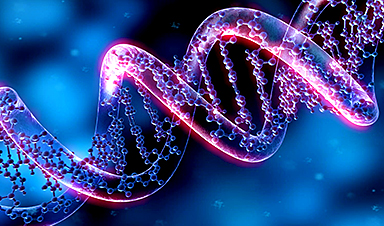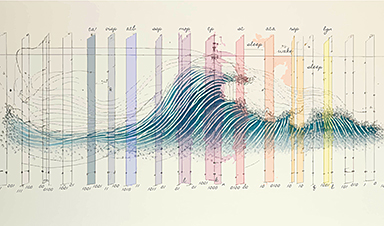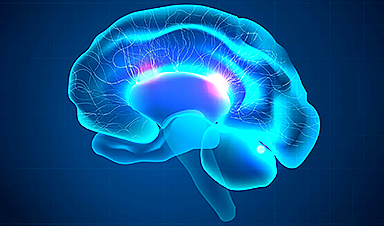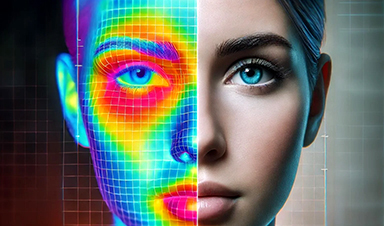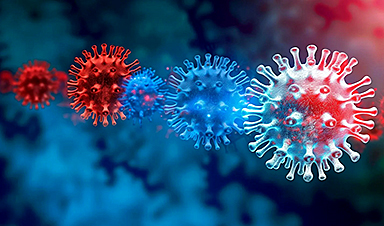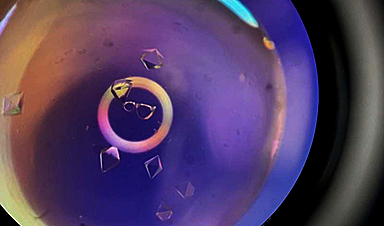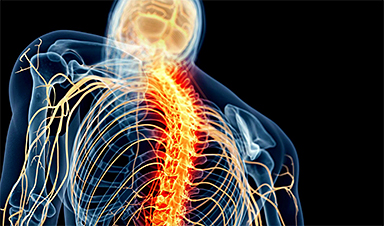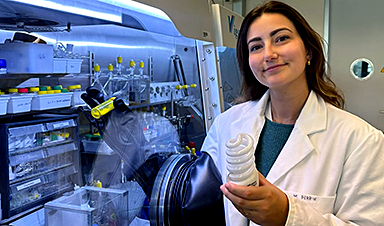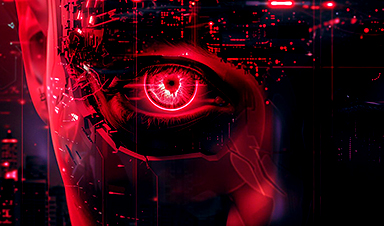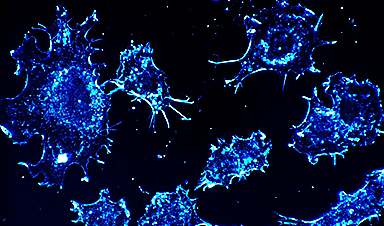In the past four years, the pathogen responsible for Coronavirus Disease 2019 (COVID-19), SARS-CoV-2, has infected more than 770 million people and caused more than 6.9 million deaths worldwide. The severe impact of SARS-CoV-2 is often attributed to its ability to suppress the interferon (IFN) response while simultaneously inducing the production of various cytokines.
To address this question, a research team led by Prof. Xue Yuanchao from the Institute of Biophysics of the Chinese Academy of Sciences, together with their collaborators, has profiled the SARS-CoV-2-to-host RNA–RNA interactions.
This study, published in Molecular Cell on Dec. 20, unveils for the first time the molecular intricacies of how SARS-CoV-2 RNA interacts with and stabilizes host mRNAs, ultimately triggering the cytokine storm.
Using state-of-the-art RIC-seq technology, the researchers comprehensively mapped the SARS-CoV-2-to-host RNA–RNA interactions in infected cells and lung tissues obtained from two deceased COVID-19 patients. Through mass spectrometry analysis of the RNA pull-down assay, they discovered that SARS-CoV-2 RNA forms base pairs with the 3′ UTR of host mRNAs and recruits the RNA-binding protein YBX3 to stabilize host mRNAs in A549-ACE2 and Vero cells. Importantly, interference with the SARS-CoV-2-to-host RNA–RNA interaction or the knockdown of YBX3 significantly reduced host mRNA stability and hindered SARS-CoV-2 replication.
Among the stabilized host mRNAs, NFKBIZ emerged as a key factor in promoting cytokine production and suppressing IFN responses, potentially contributing to the cytokine storm. Knocking down NFKBIZ resulted in a significant decrease in the expression levels of proinflammatory factors such as IL-6, IL-8, and CXCL2, while the levels of type I/III IFNs, including IFNB1, IFNL1, and IFNL2, increased. These findings suggest that SARS-CoV-2 may induce a cytokine storm via stabilized host mRNAs, with NFKBIZ playing a pivotal role.
This research not only sheds light on the regulatory role of RNA–RNA interactions in the immunopathogenesis of RNA viruses such as SARS-CoV-2, but also contributes to the development of novel strategies to combat COVID-19.
The results open new avenues for targeted interventions aimed at disrupting the specific molecular mechanisms responsible for the cytokine storm associated with severe cases of COVID-19.
More information: Hailian Zhao et al, SARS-CoV-2 RNA stabilizes host mRNAs to elicit immunopathogenesis, Molecular Cell (2023). DOI: 10.1016/j.molcel.2023.11.032
News
The Silent Battle Within: How Your Organs Choose Between Mom and Dad’s Genes
Research reveals that selective expression of maternal or paternal X chromosomes varies by organ, driven by cellular competition. A new study published today (July 26) in Nature Genetics by the Lymphoid Development Group at the MRC [...]
Study identifies genes increasing risk of severe COVID-19
Whether or not a person becomes seriously ill with COVID-19 depends, among other things, on genetic factors. With this in mind, researchers from the University Hospital Bonn (UKB) and the University of Bonn, in [...]
Small regions of the brain can take micro-naps while the rest of the brain is awake and vice versa
Sleep and wake: They're totally distinct states of being that define the boundaries of our daily lives. For years, scientists have measured the difference between these instinctual brain processes by observing brain waves, with [...]
Redefining Consciousness: Small Regions of the Brain Can Take Micro-Naps While the Rest of the Brain Is Awake
The study broadly reveals how fast brain waves, previously overlooked, establish fundamental patterns of sleep and wakefulness. Scientists have developed a new method to analyze sleep and wake states by detecting ultra-fast neuronal activity [...]
AI Reveals Health Secrets Through Facial Temperature Mapping
Researchers have found that different facial temperatures correlate with chronic illnesses like diabetes and high blood pressure, and these can be detected using AI with thermal cameras. They highlight the potential of this technology [...]
Breakthrough in aging research: Blocking IL-11 extends lifespan and improves health in mice
In a recent study published in the journal Nature, a team of researchers used murine models and various pharmacological and genetic approaches to examine whether pro-inflammatory signaling involving interleukin (IL)-11, which activates signaling molecules such [...]
Promise for a universal influenza vaccine: Scientists validate theory using 1918 flu virus
New research led by Oregon Health & Science University reveals a promising approach to developing a universal influenza vaccine—a so-called "one and done" vaccine that confers lifetime immunity against an evolving virus. The study, [...]
New Projects Aim To Pioneer the Future of Neuroscience
One study will investigate the alterations in brain activity at the cellular level caused by psilocybin, the psychoactive substance found in “magic mushrooms.” How do neurons respond to the effects of magic mushrooms? What [...]
Decoding the Decline: Scientific Insights Into Long COVID’s Retreat
Research indicates a significant reduction in long COVID risk, largely due to vaccination and the virus’s evolution. The study analyzes data from over 441,000 veterans, showing lower rates of long COVID among vaccinated individuals compared [...]
Silicon Transformed: A Breakthrough in Laser Nanofabrication
A new method enables precise nanofabrication inside silicon using spatial light modulation and laser pulses, creating advanced nanostructures for potential use in electronics and photonics. Silicon, the cornerstone of modern electronics, photovoltaics, and photonics, [...]
Caught in the actinium: New research could help design better cancer treatments
The element actinium was first discovered at the turn of the 20th century, but even now, nearly 125 years later, researchers still don't have a good grasp on the metal's chemistry. That's because actinium [...]
Innovative Light-Controlled Drugs Could Revolutionize Neuropathic Pain Treatment
A team of researchers from the Institute for Bioengineering of Catalonia (IBEC) has developed light-activated derivatives of the anti-epileptic drug carbamazepine to treat neuropathic pain. Light can be harnessed to target drugs to specific [...]
Green Gold: Turning E-Waste Into a Treasure Trove of Rare Earth Metals
Scientists are developing a process inspired by nature that efficiently recovers europium from old fluorescent lamps. The approach could lead to the long-awaited recycling of rare earth metals. A small molecule that naturally serves [...]
Cambridge Study: AI Chatbots Have an “Empathy Gap,” and It Could Be Dangerous
A new study suggests a framework for “Child Safe AI” in response to recent incidents showing that many children perceive chatbots as quasi-human and reliable. A study has indicated that AI chatbots often exhibit [...]
Nanoparticle-based delivery system could offer treatment for diabetics with rare insulin allergy
Up to 3% of people with diabetes have an allergic reaction to insulin. A team at Forschungszentrum Jülich has now studied a method that could be used to deliver the active substance into the [...]
Nanorobot kills cancer cells in mice with hidden weapon
Researchers at Karolinska Institutet in Sweden have developed nanorobots that kill cancer cells in mice. The robot's weapon is hidden in a nanostructure and is exposed only in the tumor microenvironment, sparing healthy cells. [...]

